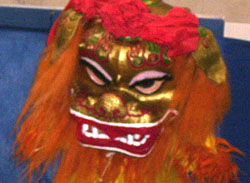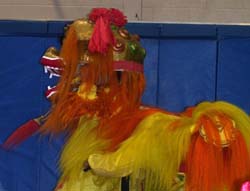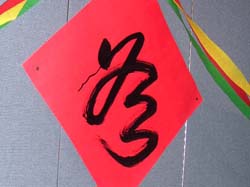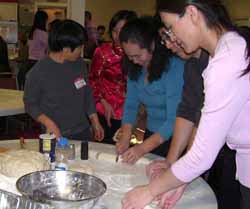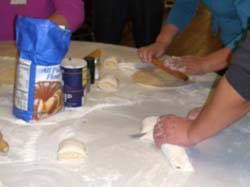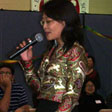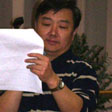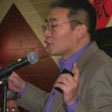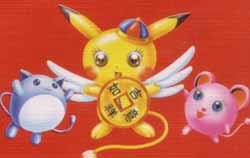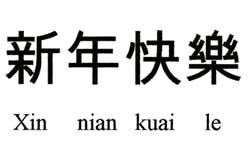Luck, Peace, and Prosperity: Celebrating Chinese New Year in Shreveport
By Sheila Richmond
Dumpling making continues as a buffet of varied dishes including dumplings, fried rice, and chow mien is served. Chinese calligraphy on large signs dots the walls. Mandarin and other languages can be heard as people laugh and talk in small groups. Some children are dressed in brightly colored two-piece traditional Chinese suits or miniature dresses in soft colors. Some women are in Chinese robe dresses or the fitted print dresses called cheongsams. Gazing into the crowd, one sees those in traditional dress mingling and chatting with those in jeans.
The traditional Lion Dance is performed, fulfilling its duties to chase away evil. Children and adults then begin to get ready, tuning violins, gathering sheet music and recitations, and preparing items for the magic tricks. One person carries red envelopes to be distributed to children later in the evening. This event has all the elements of a typical Chinese New Year celebration, but can this possibly be happening in Shreveport?
In China, the New Year Celebration is likely the most important holiday. Extended family members make long journeys to come together for the celebration. Large amounts of food and live entertainment are essential to welcome the New Year. Therefore, a celebration with special dumplings and lots of other dishes, songs, dance, music, and magic are expected; but not many would expect to experience this type of celebration in Shreveport.
Nestled in the northwestern part of the state, Shreveport hardly typifies the more readily recognized multicultural communities and traditions so visible elsewhere in Louisiana. Few would guess that enough Chinese people live in and around the city to put on such an elaborate New Year celebration. Gideon Lim, pastor of the Chinese Baptist Mission (CBM) at the First Baptist Church in Shreveport, explains that two main enticements bring people from China to Shreveport. Students, scholars, and professors come to the Louisiana State University Health Sciences Center (LSUHSC) while others come to work in local Chinese restaurants. In addition, a number of families in the Shreveport area have adopted children from China.
With so many from southeastern Asia coming to the area, the First Baptist Church of Shreveport began an outreach service in 1980 by establishing the Chinese Baptist Mission. Although the people who come to Shreveport are Chinese, they come from different areas of China and other southeastern Asian countries. Some Chinese come from Vietnam, Malaysia, Hong Kong, Taiwan, or the Philippines. The Chinese Baptist Mission serves as a gathering place for any people of similar culture, for those who perhaps had never attended church before, and for those of other Christian denominations as well as those of the Baptist faith.
Families from Shreveport and the surrounding area who adopted children from China were anxious to help their children research, celebrate, and remain close to their Chinese culture. Some of the first families who adopted would gather at a Chinese restaurant to celebrate the New Year. One year, they invited Pastor Gideon Lim to the celebration. Pastor Lim subsequently arranged for a yearly celebration at the Chinese Baptist Mission. For this annual event, the CBM sponsored a simple dumpling supper with various members of the congregation making different portions of the meal.
Another organization that reaches out to the Chinese population in the Shreveport-Bossier City area is the Chinese Students and Scholars Association (CSSA), sponsored by the Chinese Embassy. This group, whose members are mostly affiliated with LSUHSC, helps newcomers get settled in the area. It also provides opportunities for Chinese people to get together such as a Monday lunch and lecture series. The CSSA typically organizes two yearly special events - the Chinese New Year and the Middle Autumn celebrations.
The Multicultural Center of the South (MCCS) is an organization that provides services and outreach to various cultural groups in the Shreveport-Bossier area. Not limited to any one cultural group, the MCCS holds monthly programs, art classes, workshops, diversity training, translation services, and other events. The organization is dedicated to the understanding and appreciation of diverse cultures in Louisiana, especially the northwest portion of the state.
In past years, the CBM and the CSSA each held their own Chinese New Year activities, carefully coordinating dates for the separate celebrations so that people could attend both events if they so desired. However, in 2009, the Chinese Baptist Mission, the Chinese Students and Scholars Association, and the Multicultural Center of the South joined forces for one celebration. This special event was intended not only for the Chinese and southeast Asian communities, but for anyone who was interested in attending the celebration and learning about Chinese culture.
2009: Celebrating the Year of the Ox
The 2009 celebration was held in the First Baptist Church activity building. Hand-painted signs featuring calligraphy typically used in relation to the Chinese New Year were placed around the space. Words such as "luck," "peace," "fulfill dreams," and "celebrate" abounded. The general greeting for the Chinese New Year is "peace, luck, and lots of wealth."
Calligraphy is a traditional feature of Chinese New Year celebrations. Xingwen Chen is a calligrapher. He uses special brushes and ink material from China. The ink material is in the form of a solid rectangle just as it was created in the past before liquid ink was available. For the New Year celebration, he writes a special blessing to put on the door of his family's home in Shreveport. He always hangs the Chinese symbol for the word "blessing" upside down because the tradition is that doing so will bring more luck. Another term is dao fu, the word for the upside down blessing.
At the 2009 New Year celebration, many adults and children of Chinese heritage wore traditional Chinese clothing. The colorful attire not only added visual interest, but grounded the event in the culture. Qiu Lu, a geologist with a local Shreveport company, grew up in southern China. She explained that it has been a tradition to get new clothes to celebrate the Chinese New Year. One would get a complete set of new clothes to wear, new shoes, and a new haircut. Lu considers that perhaps in the past people got new clothes only at the New Year. These days children get new clothes all the time for no special occasion, so it is not so special a thing to get new clothes for the New Year celebration.
One special feature of the 2009 celebration was a dumpling demonstration sponsored by the Chinese Baptist Mission. Different families volunteered to make the meat filling and the dough ahead of time to streamline the actual crafting and cooking of the dumplings. Those making the dumplings had various degrees of expertise. Making dumplings for the New Year celebration is a tradition from the northern area of China, so not all who attended the celebration were familiar with the process. Qiu Lu, said that in Northern China those making the dumplings would sometimes put coins in one or two dumplings as a surprise and for luck.
Most Chinese New Year celebrations revolve around copious amounts of food, and the 2009 celebration in Shreveport was no different. The CSSA sponsored the meal and had the event catered by Chef Lee, a local restaurant chain. Dr. Long Jin, president of CSSA, acknowledged that Chinese restaurants usually alter their traditional dishes to better appeal to American palates. The dishes prepared by the local restaurant may have been Americanized, but everyone, Chinese and others alike, seemed to enjoy the dinner. They seemed to specially like the traditional dumplings prepared by members of the CBM congregation.
The meal itself was served by members of a Chinese student group from Caddo Magnet High School. This group, made up of students with Chinese and other Asian ancestry, was formed as a service group. They look for ways to help the Chinese and similar cultural communities in the area as well as for opportunities to educate about their own cultures.
In China, it is traditional to prepare everything on the day before the Chinese New Year because no cooking can be done on that special day. Fish must be a part of the meal because the pronunciation for the word "fish" is also the word for "more." The tradition is to cook a lot of dishes that represent abundance for the future.
In addition to special foods, some form of entertainment is always a part of the New Year activities. Dr. Jin noted that it is traditional for performers to sing, dance, play instruments, or recite poems during the Chinese New Year celebration. Pastor Lim mentioned that Chinese Central TV holds four to five hours of professional performances to celebrate the event. In the past, CBM New Year celebrations consisted of a simple dumpling meal and perhaps a guest speaker. However, at the 2009 celebration, the groups combined their efforts to present performances that included violin music, a dramatized poem, magic tricks, singing, a regional dance, and other entertainment. Compi Chao, assistant pastor of the CBM, and Janet Jia put this talent program together and served as emcees, speaking in both English and a Chinese dialect.
The entertainment portion of the celebration included a martial arts demonstration. Students of varying ages from the Tiger on the Red - Shaolin Kung Fu Center in Shreveport performed in both small and large groups, demonstrating their knowledge and expertise in the ancient tradition. Several of the adults performed intricate movements with swords and other items, singly and in pairs.
Sponsored by the MCCS, the traditional Lion Dance was performed by Kung Fu experts from the Shaolin Center. The large lion costume was handled by two people, coordinating the movements and interactions with the audience. The lion is first called by the drum. He then dances around, twisting and turning, running and jumping, scaring away evil. His huge head scans the audience to keep an eye on all. His large mouth opens and closes, sometimes frightening those not familiar with the tradition. The movements are intricate and require that those wearing the costume be fit and athletic to perform properly.
According to Qiu Lu, many people believe in demons, so the lion and sometimes fireworks are used to scare away evil. Fireworks are used only in open spaces, so there were no fireworks at this performance. Lu said that the pronunciation of the verb "to cut cabbage" in Mandarin also means "hundreds." That may explain why the lion, as part of the performance, chops up a head of cabbage and spits out the pieces. It is a way to wish hundreds of blessings.
The Chinese New Year celebration would not have been complete without the typical red envelope handed out to children. A number of cultural considerations and restrictions apply to this tradition. Lu notes that for people in southern China, it is an insult to offer a red envelope with no money. It is also considered ill-mannered to ask for an envelope. Pastor Lim said that the color red brings good luck, blessings, and fortune, and that red chases away evil and bad luck. Typically the envelopes are given to little children as opposed to older teens and those young people who are already employed. No adults receive the envelopes. Dr. Jin mentioned that children from large, rich families might receive hundreds to thousands of dollars from family members during the New Year celebration.
For the 2009 Chinese New Year Celebration, the Chinese Baptist Mission had purchased red envelopes featuring a figure from the Pokémon cartoon. Envelopes can be purchased from Asian stores, usually in large cities such as Houston and Dallas. Pastor Lim and the CBM put a fifty-cent piece in each envelope for the children who attended. Since the envelopes are traditionally given only to young children, Pastor Lim first called for those children five years of age and under to come up and receive the envelopes. He continued to call out age groups until he had distributed all of the envelopes, ending with those in high school.
The 2009 Chinese New Year celebration was a huge success. The organizations had planned for about 200 attendees, and more than 300 showed up. While that number put a strain on the food reserves, it was a fabulous event for those Chinese who celebrate the tradition. The celebration also provided wonderful outreach to members of other cultural communities who were invited to share in the event, learn about Chinese culture, and enjoy a sumptuous meal in congenial and interesting company. To each and all was wished peace, luck, and lots of wealth.
Sources
Jin, Long. Personal interview. 29 Jan. 2009.
Lim, Gideon. Personal interview. 11 Feb. 2009.
Lu, Qiu. Personal interview. 18 Feb. 2009.


